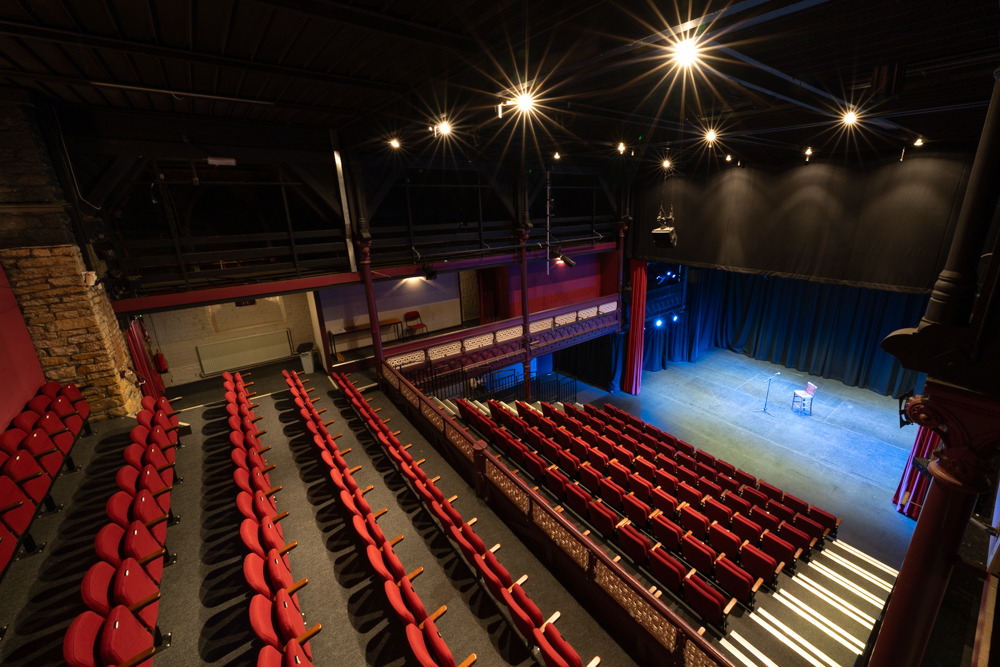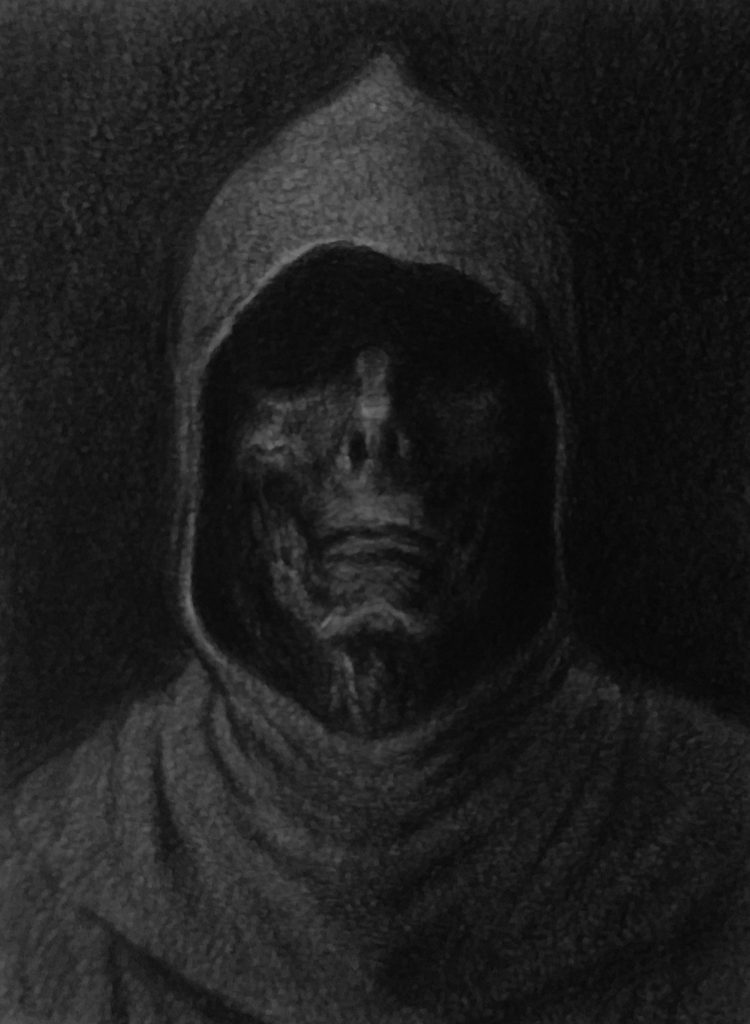We are off to see Nunkie Productions (https://www.nunkie.co.uk/) touring show of “Gravest Fears” as part of their M R James Project, spreading ghost stories through the land; those wonderous things that thankfully don’t ever die. The show is in association with the Enable Us Project at the University of Sheffield (https://performancevenues.group.shef.ac.uk/enable-us/) which has been showing some excellent shows as part of it’s programme.
Our return to the University of Sheffield Drama Studio is a suitable one for this show as the venue isn’t too much of a behemoth, open space that could (without modification) leave you feeling on the outside. This is a contained show that is helped by you feeling you are in the room with the narrator as if in modest urban townhouse.

Gravest Fears is a show structured around two stories from M R James which are narrated by Robert Lloyd Parry. Parry looks the part and has considerable pedigree in this department having playing him for Mark Gatiss’ BBC2 documentary and having performer and reported on across teh United States. As he sits in the chair he has the feeling of a storyteller comfortable in his own domain, yet portrayals the slight unease at the subjects of the stories well. He pour his spirits next to his table festooned with picture frames and other paraphenalia of a man of antiquary and delivers the stories true to that of a seasoned storyteller, not just someone reading from a page. There is a light the actor and the table, and little else needed here; the listener has to imagine the goings on much like they were reading the book themselves.
The first story is “The Stalls of Barchester”. Parry here is performing as the scholar Dr Black who is looking through an old diary and other assorted pieces from Dr Haynes, an Archdeacon who died at the Barchester Cathedral approximately 50 years ago (to the early 1800s). Once the evidence starts getting read, the reconstruction of events begins and what initially seems like the unlucky death of a previous Archdeacon, becomes something with a much creepier undertone.
Firstly, Parry certainly suits the part. “The Stalls of Barchester” is a story that in particular that highlights M R James’ scholarly interests and his family involvement in the church setting. Parry brings this element to the fore in his characterisation with his quiet enthusiasm for finding the 1814 records and a kind of driving mix of agnosticism of circumstance and the academic air of someone who wants to study the phenomena in front of their eyes and apply reason. The actor also carries the slightly dry love of the details, facts and biblical references you would expect to be close to M R James. The strength of this story for us is the little elements that hint at a pervading folk horror, the memories in our environment (here the Hanging Tree and intentions of the wood carver). The notion that one’s own moral failings causes Dr Haynes to be at the mercy of these strange circumstances is interesting and reminds a lot of the morality at the centre of fairy tales and the Old Testament.

Next there is “An Episode of Cathedral History”. This story looks at a mysterious tomb that is discovered in the church in the background to a plot where the Archdeacon Burscrough is forcing through renovation to Southminster Cathedral in line with a Gothic Revival style. This one shows the range of Parry as he inhabits the characters of the everyday verger (Mr Worby) both as his adult self and as a child getting up to mischief (and seeing more than he should) as well as a rather bullheaded, pompous Archdeadon Burscrough and a historian husband-wife team that go to write up the progress of the renovation. Parry gets into the spirit of things and lingers quite well in the right places such as where we peer into a coffin, look in the darkness or feel the pure disbelief of Worby’s father at what is seen. This story is the more pacy and immediate of the two.
It is a good idea to arrange the stories in this fashion. The “Stalls of Barchester” is like a details-heavy reflection of M R James mind and life with it already happening and the main character investigating like M R James himself looking into old literary sources. The second story is you discovering things as they enfold, a larger set of characters, and plenty to energise the audience as the tension grows; it is effective being after the intermission.

In summary, this performance brings to mind exactly the atmosphere and method of delivery that M R James would have intended and desired. It does not have the flash of elaborate set-pieces or technology, multiple actors or extensive attempts to rework the content in new ways; but it doesn’t need to. To say it is simply telling a story isn’t really doing it justice. It’s focus on the narrator allows the audience to imagine with their inner eye the horror, and Parry’s role as the gatekeeper to this old time horror on this wet and cold night is the perfect one.